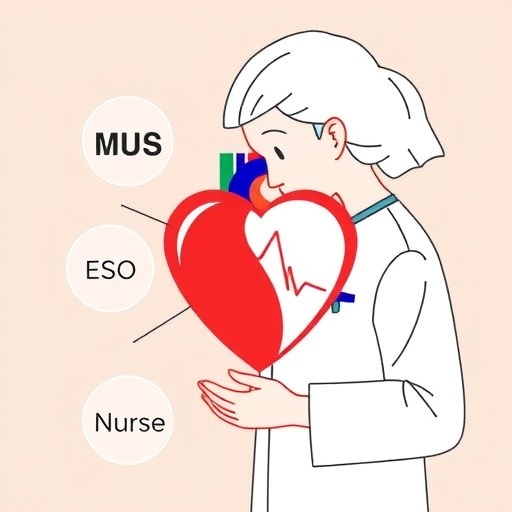
Credit: Magni Mohr
Twice-weekly football training combined with dietary guidance improves fitness level and cardiovascular health profile in untrained 55-70-year-old women and men with prediabetes. Also leads to healthier weight loss than through normal dieting.
This is the conclusion of the world's first trial involving football and dietary guidance in older prediabetics, carried out in the Faroe Islands by football researchers and physiologists from the Department of Sports Science and Clinical Biomechanics at the University of Southern Denmark.
The purpose of the trial was to investigate the health-related potential of combining advice on healthy eating with recreational football training, and the results have just been published in the acclaimed Scandinavian Journal of Medicine and Science in Sports.
"What we've seen is that the combination of recreational football and dietary guidance is highly effective; more effective than we dared hope. The trial participants derived significant positive effects on both their cardiovascular and metabolic health profile," says Magni Mohr, project leader and associate professor at the University of Southern Denmark.
Improved cardiovascular health was determined by an increase in physical fitness and a decrease in blood pressure. The changes correlated well with what the researchers had found in previous trials and are estimated to reduce the risk of cardiovascular disease by 50% – assuming that the participants maintain their improvements.
Improved metabolic health profile was determined by a decrease in total cholesterol, LDL cholesterol and body fat percentage compared with the group that only received dietary guidance. Both groups showed a decrease in resting blood sugar, with no significant between-group differences.
A more effective way to lose weight
The combination of football training and guidance on healthy eating was more effective for metabolic health and a healthier way to lose weight than dietary guidance alone. Part of the explanation for this is that football training produces larger muscles:
"Individuals who combine dietary guidance with football training can lose a significant amount of weight while at the same time achieving an increase in muscle mass and functional capacity. This is very different to the results of normal dieting, where the individual loses weight but becomes physically weaker because they both lose fat and muscle mass," says Peter Krustrup, professor of sport and health sciences at the University of Southern Denmark, who has 15 years' experience of studying the health-related effects of football.
The trial participants were untrained women and men aged 55-70 years. At the age of 60 or 70, individuals generally need to strengthen their physique. So it is far from optimal for them to diet without training at the same time. They do not want to further weaken their physique, which would be the result of an ordinary diet.
"An absolute winner for middle-aged and elderly women and men with prediabetes"
"The study provides evidence that we can prevent type 2 diabetes through an intervention combining exercise and diet. The figures from the study also show that football is an effective and broad-spectrum form of exercise that works for both women and men. You could say it's an absolute winner," says Peter Krustrup.
The idea of football for 60 and 70-year-old female patients is new. But the study showed that so-called Football Fitness – a form of football with the focus on a thorough warm-up, ball drills in pairs and games on small pitches – is also suitable for 70-year-old women with prediabetes. The participants enjoyed the training and did not sustain any serious damage to muscles, bones or joints.
"Normally, you wouldn't think of football as something for 70-year-old women, but we saw excellent attendance even though the training took place in the winter. The participants formed good relationships, had fun together and enjoyed the social aspect so much that many of them are still participating in Football Fitness," concludes Magni Mohr, who helped implement the training and testing in the Faroe Islands.
About the study
The study was carried out in the Faroe Islands, with the participants recruited from a national cohort of prediabetics.
50 individuals – 25 of each gender – underwent a 16-week intervention comprising dietary guidance and twice-weekly football training sessions lasting 30-60 minutes. The duration of the training increased progressively from 30 minutes per session in the first 2 weeks to 60 minutes per session in the final 10 weeks.
The participants were 55-70-year-old untrained men and women who were prediabetic, had poor physical fitness and were predominantly overweight. Half had weak bones (osteoporosis).
The study was carried out collaboratively between researchers from the University of Southern Denmark's Department of Sports Science and Clinical Biomechanics and the University of the Faroe Islands with funding from the Faroese Research Council (Sjúkakassagrunnurin), the Faroese Football Association (FSF) and the Faroese Diabetes Association (Diabetesfelag Føroya).
###
Contact
Magni Mohr, associate professor and physiologist, Department of Sports Science and Clinical Biomechanics, University of Southern Denmark [email protected]; ?+298 29 22 70?????????
Peter Krustrup, professor of sport and health, Department of Sports Science and Clinical Biomechanics, University of Southern Denmark [email protected], +45 2116 1530
Bo Kousgaard, communications officer, Department of Sports Science and Clinical Biomechanics, University of Southern Denmark [email protected]; +45 2323 8624
FACTS: Key results of the trial
The 27 participants in the group that combined football training with dietary guidance derived significant positive effects on both their cardiovascular and metabolic health profile compared to the 23 participants who only received dietary guidance.
On average, the participants showed:
- a significant increase in physical fitness of 14%
- a decrease in mean blood pressure of 8 mmHG
- a decrease in resting heart rate of 5 bpm
- a decrease in body fat mass of 3.4 kg
- a decrease in total cholesterol of 0.5 mmol/L
- a decrease in LDL cholesterol of 0.3 mmol/L
- an increase in muscle mass of 0.7 kg
See the scientific article here. [https://onlinelibrary.wiley.com/doi/abs/10.1111/sms.13081]
FACTS: What is prediabetes?
- Prediabetes refers to the stages preceding type 2 diabetes. An individual with prediabetes is at increased risk of developing type 2 diabetes and cardiovascular disease.
- There are currently around 350,000 Danes with type 2 diabetes and around 300,000 estimated to have prediabetes.
- 30-40% of persons diagnosed with prediabetes go on to develop type 2 diabetes in the next 3-4 years.
- There are no obvious symptoms, so a person can have prediabetes without knowing it.
- Unlike type 2 diabetes, which is a chronic disease that the person has for the rest of their life, with prediabetes the blood sugar values can be brought down to a normal level through active intervention: change in diet, more exercise, weight loss, avoiding smoking.
- Your GP can test you for prediabetes by measuring your blood sugar level by means of a blood test.
Source: Steno Diabetes Center Copenhagen (SDCC).
Media Contact
Bo Kousgaard
[email protected]
45-23-23-86-24
http://www.sdu.dk/en/Om_SDU/Fakulteterne/Sundhedsv
Original Source
https://www.sdu.dk/en/om_sdu/institutter_centre/iob_idraet_og_biomekanik/nyt_iob/prediabetes_recreational+football http://dx.doi.org/10.1111/sms.13081





